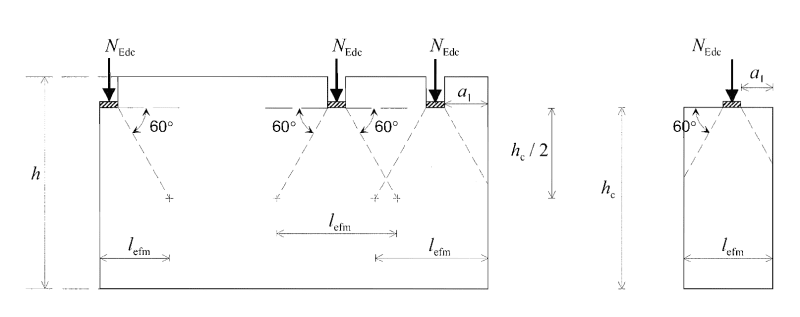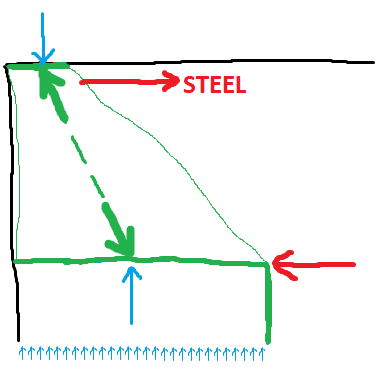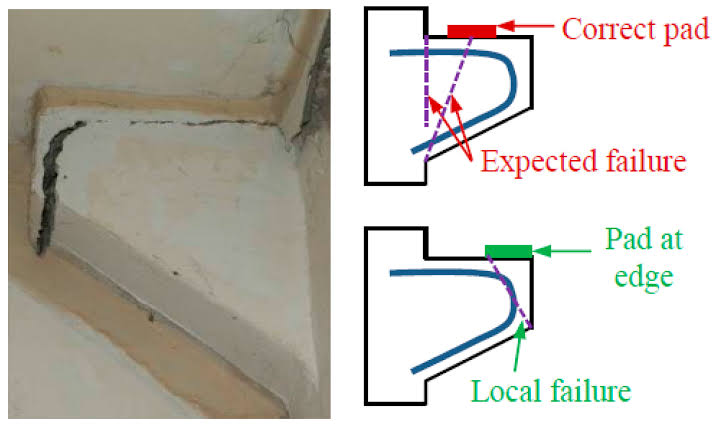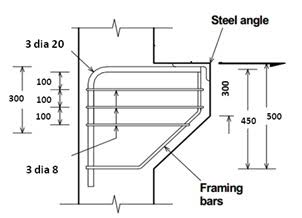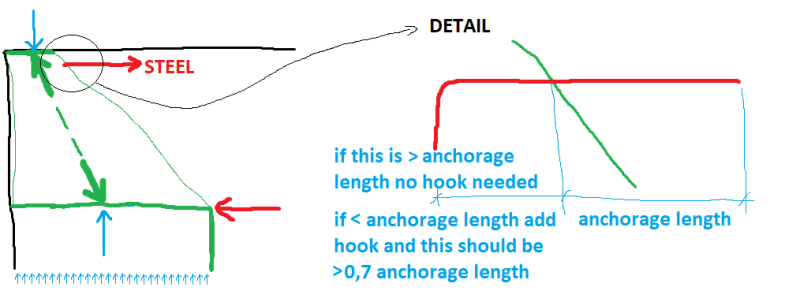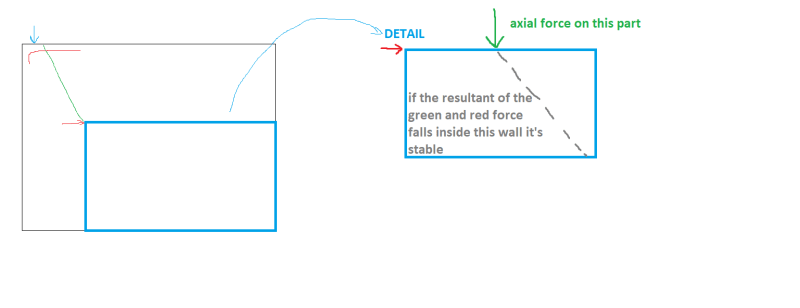Sandychan
Structural
- Sep 25, 2015
- 22
Hello everyone,
I am doing a design of a precast concrete wall with a point load from a beam reaction at its left corner. Besides the point load, the wall only have it own weight. There is a recommendation in old Swedish concrete code suggested that the effective width of the wall under a concentrated load at the corner is:
be = bo+(h/6)
where bo is a bearing width and h is the height of the wall
The thing is that the code only told how to calculate the effective width but not how to design it. I am wondering if I use that effective section, do I still need to consider eccentricity between the load and the center of the effective section? Or can I just think that the point load is concentric? Please see the picture for the sketch of the case I work with. Thank you all so much in advance.

I am doing a design of a precast concrete wall with a point load from a beam reaction at its left corner. Besides the point load, the wall only have it own weight. There is a recommendation in old Swedish concrete code suggested that the effective width of the wall under a concentrated load at the corner is:
be = bo+(h/6)
where bo is a bearing width and h is the height of the wall
The thing is that the code only told how to calculate the effective width but not how to design it. I am wondering if I use that effective section, do I still need to consider eccentricity between the load and the center of the effective section? Or can I just think that the point load is concentric? Please see the picture for the sketch of the case I work with. Thank you all so much in advance.


